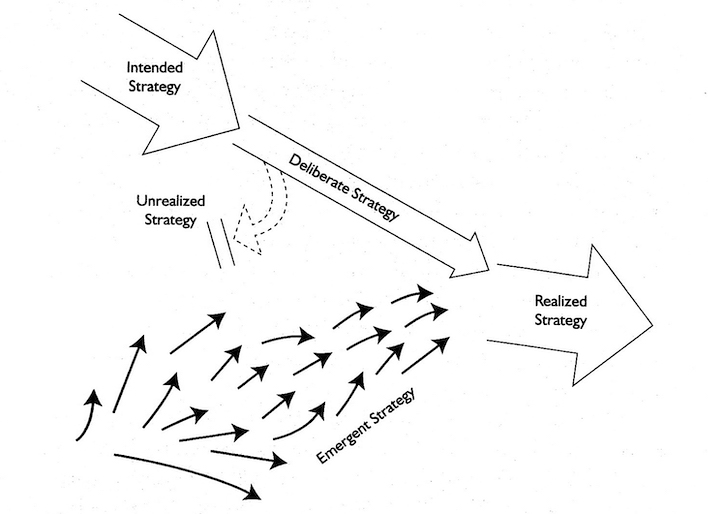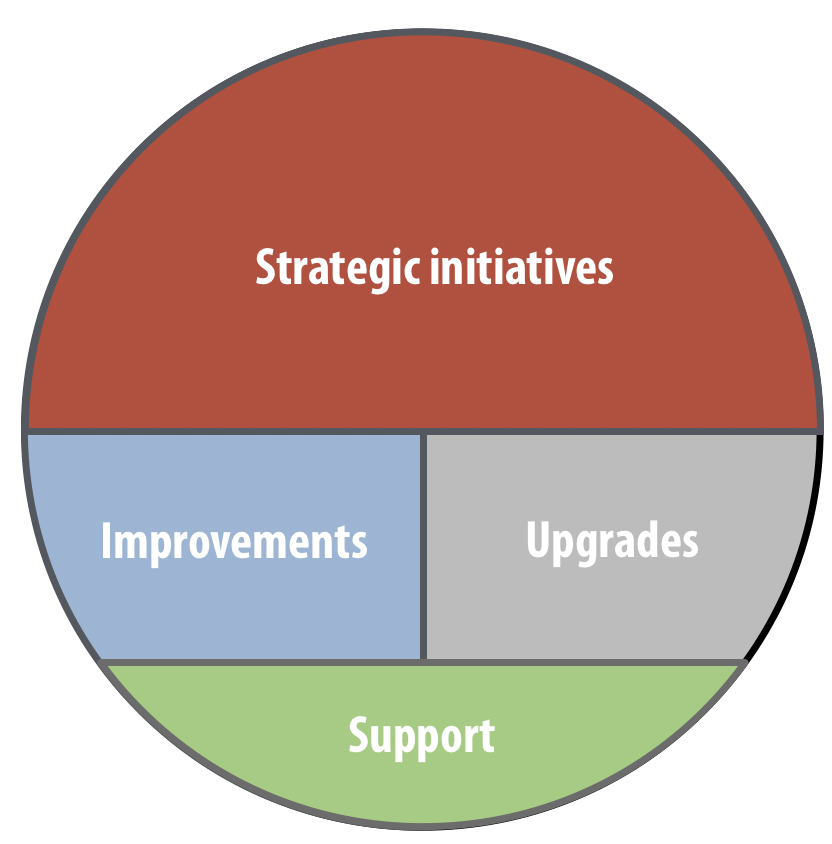“In preparing for battle, I have always found that strategies are useless, but strategizing is indispensable” might be a frank reformulation of the famous quote by Dwight D. Eisenhower1. Still, the truth of the increasingly complex business environment is that plans and strategies are invalidated faster and faster. Few CEOs nowadays honestly think that their 5-year or even 3-year strategy is going to last.
Nevertheless, many CEOs nowadays have forgotten that “… strategy has two equally important aspects, interrelated in life … The first of these is formulation; the second implementation … in real life, the processes of formulation and implementation are intertwined. Feedback from operations gives notice of changing environmental factors to which the strategy should be adjusted. The formulation of strategy is not finished when implementation begins. A business organization is always changing in response to its own makeup and past development. Similarly, it should be changing in response to changes in the larger systems in which it moves and in response to its success or failure in affecting its environment.” Andrews 1971 2

20 years later after Andrew’s book, i.e., 30 years ago, the management thinker Henry Mintzberg3 further discussed the difference between the intended strategy and the realized strategy created by responding to internal and external changes (see figure to the right). He argues that only a small proportion of the realized strategy is deliberate while the emergent part increases over time.
Every part of running an organization has become more complex over the last thirty years, which means that organizations must continuously strategize to transform changes to emergent strategy.
In its simplest form that means that the strategy-process changes from a perceived linear stage-gate process to a continuous iterative strategizing process as illustrated below:

The first consequence of thinking like this is that a strategy is never new – it is rather an improvement of what was already there. If you think about it: Was there ever a new strategy except when the founders of the company first met ‘in the garage’? Whatever followed that day was adjustments to an existing strategy, organization, products, adjusted customer focus, etc. No matter how radical a new strategy seems, it always contains a continuation of an existing business.
Another consequence of replacing long strategy-periods with continuous strategizing becomes clear as strategy iterations are getting shorter, i.e., the strategy is adjusted more often due to changes/feedback: The people who’re strategizing must be closer to daily business to shorten the feedback loop. The easiest way to get the feedback into the strategy loop is to involve people from the organization who are in the feedback loops with customers, namely those who are in continuous contact with them directly or through IT-systems.
The top-down multi-year-strategy-process was easy to understand, but it has become irrelevant.
The ambition of this article is to make it very concrete how strategies can become more like a living organism than a static document, and make it clearer how strategizing involving large parts of the organization continuously and rapidly can adapt the strategy relevantly. This should be an indispensable capability of every organization.
Continue reading “Strategizing over Strategy”
